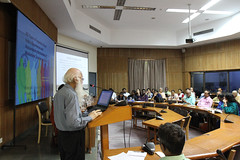
- See More About:
- Brenton Tong
Higher education endowments: Limiting loss, ramping up returns
by
Juliet MonroeEndowments in higher education are facing more pressure to perform than ever. A financial endowment is a donation of money or property to a nonprofit organization for the ongoing support of that organization. Usually the endowment is structured so that the principal amount is kept intact while the investment income is available for use, or part of the principal is released each year, which allows for the donation to have an impact over a longer period than if it were spent all at once. An endowment may come with stipulations regarding its usage. There are three types of endowment funds: unrestricted endowment, term endowment funds and quasi endowment funds. Unrestricted endowment can be used in any way the recipient chooses to carry out its mission, while term endowment funds stipulate that all or part of the principal may be expended only after the expiration of a stated period of time or occurrence of a specified event, depending on donor wishes. Lastly, Quasi endowment funds must retain the purpose and intent as specified by the donor or source of the original funds and earnings may be expended only for the specified purpose.Several US colleges and universities with the highest endowments in the country posted losses for the 2016 fiscal year, according to a report by Inside Higher Ed. Harvard University, which has the highest endowment in the US, lost nearly $2 billion dollars from its fund – a -2% loss. Inside Higher Ed also reports that endowments’ performances are also being closely scrutinized by the government, which is pushing higher education institutions to spend more endowment money on student financial assistance. While well-intentioned, such a move could be limited by donors’ earmarking of endowment funds, leaving schools’ hands legally tied. Taxing endowment gains are also another possible government intervention, which will shrink profits further. For the seasoned endowment manager, such news further underscores the need to ensure peak portfolio growth. Given that schools rely on endowments for a large percentage of their operating budgets and scholarship offerings, managers need to push hard for gains despite the spectres of market unpredictability and tightening government regulation. Thus it’s essential that endowment managers find ways to optimize their investment operations as much as possible in order to maximize returns. The rapid pace of technology and the increasing complexity of the middle and back office functions make collaboration with asset servicing companies a viable option for endowments. For instance, these firms have sophisticated middle and back office solutions that include data warehousing and mobile data management, allowing managers to review their data on the go. They also offer data aggregation and normalization across all asset classes, as well as enabling access to dozens of prime brokers and custodians. The latest in proprietary investment technology transforms raw data into usable information for enhanced portfolio strategizing. Asset servicing companies also have fund administration services that will further enhance endowment managers’ capacities to dedicate their time to directing the investment approaches for their fund. Specific benefits of their platform include asset and price verification, calculation of net asset values, investor communications and reporting in addition to cloud-based reporting and investor portals, among others. While ups and downs are part and parcel of the act of investing, endowments are particularly sensitive to volatility due to the immediate operational and student aid needs of the higher education institution. Partnering with asset servicing firms saves the institution’s endowment fund time and resources, therefore allowing students to reap the greatest benefit on the eventual returns.
Juliet Monroe is a financial adviser who is currently working for a firm in NYC that specializes in family offices, pensions and
endowments
.
Article Source:
eArticlesOnline.com}